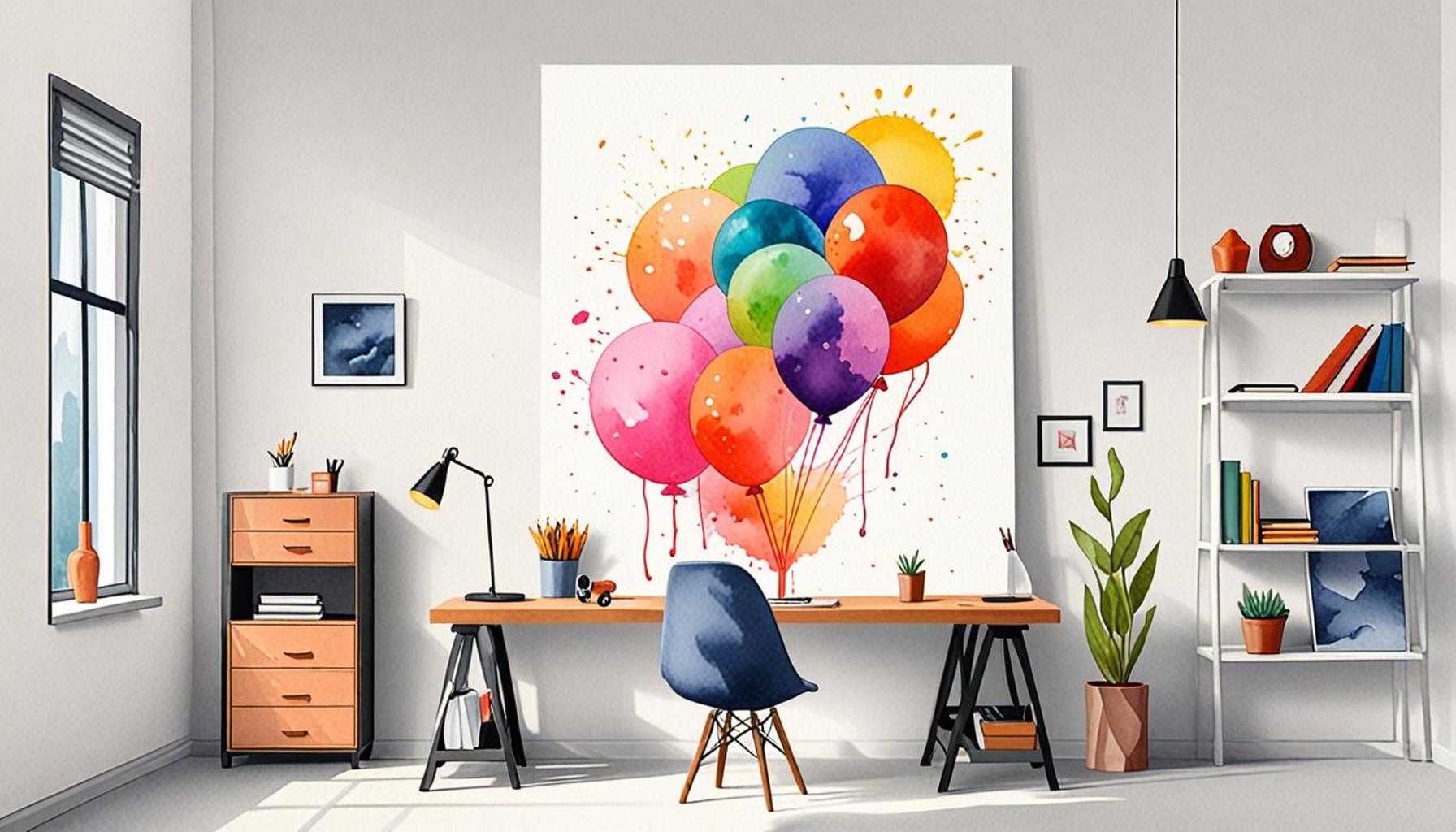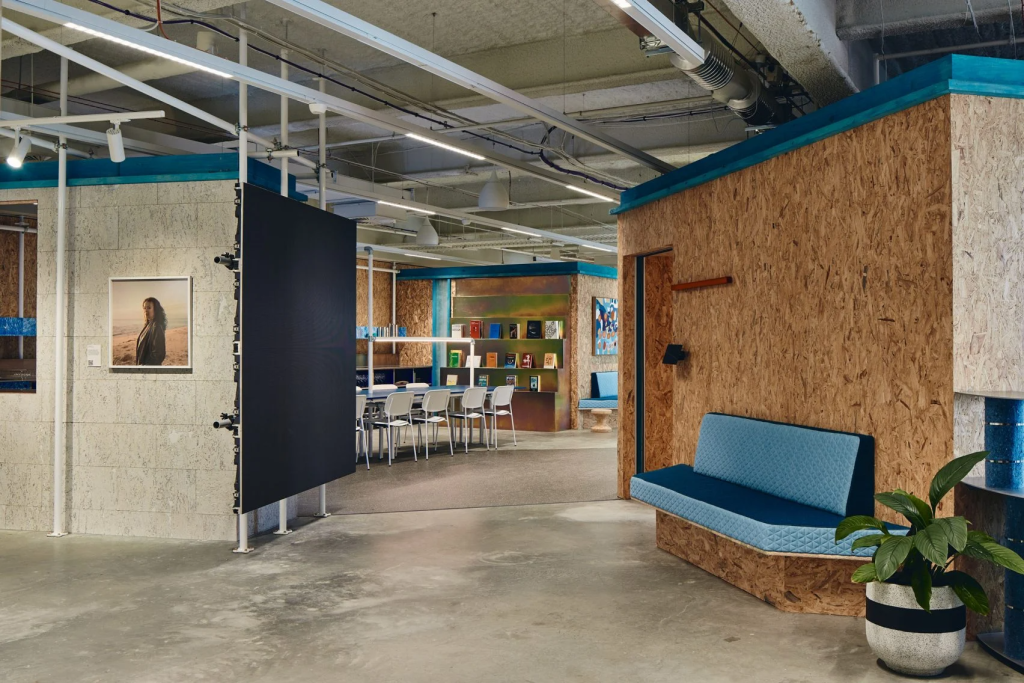The Art of Letting Go: How Minimalism Contributes to Spatial Efficiency in Offices

Understanding Spatial Efficiency
In today’s fast-paced work environment, realizing spatial efficiency is essential for fostering productivity and creativity. The principle of minimalism is not just a trend but a transformative approach that encourages individuals to streamline their workspace. With increasingly remote work setups and open office designs, understanding the benefits of letting go has never been more pertinent. Companies are increasingly finding that a decluttered workspace translates directly into improved performance levels.
At its core, minimalism advocates for a disregard of the excess, favoring practicality and purpose over accumulation. As more organizations embrace this philosophy, they are discovering its manifold benefits. Here, we consider some pivotal advantages of adopting a minimalist approach in office spaces:
- Clutter Reduction: Eliminating unnecessary items can lead to a clearer mind. Studies have shown that a cluttered environment can mirror a cluttered mind, leading to increased stress levels and decreased focus. By minimizing physical distractions, employees can foster creativity and note improvement in problem-solving capabilities.
- Enhanced Focus: Fewer distractions allow employees to center their attention on what truly matters. Minimalist workspaces often make use of natural light and open layouts, which have been found to enhance concentration and reduce fatigue. For instance, Google has utilized open office designs in their headquarters in California to create spaces that encourage collaboration while still providing areas for focused work.
- Improved Aesthetics: A minimalist design creates a visually appealing and calming environment. Simple color palettes and uncluttered surfaces contribute to an atmosphere conducive for brainstorming and innovation. Moreover, companies like Apple have established a brand identity built on this very principle, evidenced by their sleek product designs and minimalist store layouts.
Research indicates that offices embracing minimalism have reported better employee engagement and satisfaction. According to a study from the University of Exeter, employees in environments characterized by minimalism and natural elements reported a 15% increase in well-being. The art of letting go enables organizations to utilize their spaces more effectively, optimizing both layout and workflow.
As we delve deeper into this concept, we will explore specific strategies and notable real-world examples of businesses successfully adopting minimalist principles. Organizations such as Automattic — known for its remote work policies — have effectively implemented minimalist strategies to enhance their teams’ productivity. Join us on this enlightening journey to discover how simplicity can pave the way for increased efficiency in the workplace.
DISCOVER MORE: Click here to uncover how minimalism can redefine your priorities

Embracing Minimalism for Workspace Optimization
Implementing the art of letting go within office environments is not simply an aesthetic choice; it serves as a methodical strategy for spatial efficiency. As more organizations in the United States explore the synergy between minimalism and productivity, they are recognizing that less genuinely can be more. The principle emphasizes intentionality in workspace design, creating a harmonious balance between functionality and minimalistic beauty.
One of the foundational elements of minimalism in the workplace is the concept of functional design. This approach involves selecting furniture and decor that perform double duty or serve purposeful utility, rather than filling spaces with items that have little to no value. Many companies have adopted multi-functional workstations, which significantly optimize usable space. For instance, desks equipped with built-in storage can reduce the need for bulky filing cabinets, effectively minimizing clutter while maintaining easy access to essential documents.
Another essential aspect of minimalist workspace design is flexibility. The contemporary office is increasingly moving towards adaptable layouts that can be reconfigured with ease. This not only accommodates changing team dynamics but also enhances the ability to collaborate more fluidly. An example can be seen in the rise of modular furniture systems, which allow workers to rearrange their environments to better suit their specific tasks, enabling rapid transitions between collaborative brainstorming sessions and focused individual work.
Key Benefits of Minimalism in Office Design
Choosing to embrace minimalism can lead to numerous advantages for organizations, including:
- Cost Efficiency: Minimalist design prompts companies to consider their investments wisely, prioritizing quality over quantity. This can reduce unnecessary expenses related to maintenance and replenishment of excess items.
- Enhanced Creativity: A streamlined environment can prompt innovative thinking. With fewer distractions, employees can approach challenges with a fresh perspective, often leading to out-of-the-box solutions that may not have emerged in a cluttered setting.
- Health and Well-being: Natural light, open spaces, and breathable layouts cultivated through minimalism can lead to lower stress levels and improved employee morale. Research shows that employees in minimalist offices report feeling more energized and focused on their tasks.
As organizations continue to witness the impact of a decluttered workspace, many are developing policies centered around minimalism. Promoting the importance of letting go of unneeded items and streamlining operations stands as a powerful catalyst for positive change. Moreover, this initiative addresses environmental concerns, as businesses that declutter often also consider sustainable practices in their choices, encouraging the responsible disposal or repurposing of obsolete items.
In summary, embracing minimalism in the office represents a progressive shift towards optimizing spatial efficiency and enriching the work experience. The next sections will delve deeper into practical strategies for implementing a minimalist approach and highlight organizations that have reaped substantial rewards from this transformative philosophy.
| Advantage | Description |
|---|---|
| Increased Productivity | By removing unnecessary clutter, employees can concentrate better and work more efficiently, making the workplace more dynamic. |
| Enhanced Creativity | A minimalist approach encourages innovative thinking by allowing the mind to be free of distractions, fostering new ideas and solutions. |
In modern office environments, the shift toward minimalism highlights how essential spatial efficiency can be for promoting a healthy and productive workplace. The aesthetic qualities of a minimalist design translate directly into practical advantages. For instance, when clutter is minimized, employees experience heightened focus and improved performance. This simple yet transformative practice encourages a culture of efficiency, leading businesses to experience greater output without increasing resources.Moreover, a minimalist setting has a unique way of sparking creativity. By providing clear spaces that allow for mental clarity, the notion of minimalism makes way for free-flowing ideas and helps to cultivate innovative mindsets. In essence, the art of letting go not only paves the way for spatial efficiency but also invites a culture where individuals can thrive, ultimately reshaping the future of workplace design.
DISCOVER MORE: Click here to learn about mindful living
The Transformative Potential of Minimalistic Workflows
Beyond merely rearranging furniture and reducing clutter, the art of letting go extends into redefining workflows and enhancing company culture within minimalist office environments. Adopting a minimalist mindset requires organizations to critically assess not just the physical components of their spaces, but also the processes that dictate daily operations. Streamlining workflows can effectively increase spatial efficiency and lead to a more harmonious office atmosphere.
A pivotal element of this transformation lies in technology integration, enabling seamless transitions from traditional to digital environments. For example, organizations are increasingly utilizing project management tools and cloud-based storage systems that eliminate the need for vast amounts of paper and other physical clutter. By digitizing routine documents and tasks, employees can access vital information on-the-go without being encumbered by stacks of paperwork, fostering greater mobility and collaboration amongst team members.
Moreover, embracing minimalism requires a focus on communication efficiency. In a decluttered office environment, traditional silos give way to open channels of dialogue. This can be achieved by establishing regular team meetings or implementing an open-door policy that encourages feedback and collaboration. According to a study by the Harvard Business Review, organizations promoting open communication environments see a 25% increase in team collaboration and project success. In this context, a minimalist office not only promotes fewer distractions visually but fosters enhanced teamwork through an atmosphere of transparency.
Minimalism and Employee Empowerment
Minimalism not only reshapes the workspace but also influences employee mindsets. When organizations adopt a minimalist philosophy, they empower employees to take ownership of their environments and professional responsibilities. This empowerment is crucial in maintaining a high level of engagement and job satisfaction. Explicitly inviting team members to declutter their personal workspaces can significantly contribute to a sense of belonging and value within the company culture.
Many companies have turned to employee-driven initiatives that encourage teams to implement minimalistic strategies themselves. For example, Google Workspace has launched “20% time” that allows employees to work on projects of personal interest. This not only fosters creativity but helps employees clear away less meaningful obligations, ensuring that their time—and space—are optimized. When employees are enabled to make choices regarding their role and workspace, it leads to enhanced morale and productivity.
The impact of minimalism on company branding cannot be overlooked either. In a time where sustainability and social responsibility resonate with consumers, businesses that prioritize minimalistic values signal a commitment to thoughtful resources management. Brands that embody a minimalist approach often align their operational strategies with broader ecological goals, attracting clients who share similar values. For instance, companies like Everlane emphasize transparency and minimalism in both their product designs and office environments, setting a tone that reverberates throughout their branding efforts.
In essence, recognizing the various facets of minimalism—from workflow optimization to employee engagement and branding—allows organizations to harness its full potential. The journey towards a decluttered, streamlined environment may challenge traditional concepts of work, but the benefits revealing themselves through enhanced spatial efficiency, enriched company culture, and forward-thinking practices make it a worthy endeavor.
DISCOVER MORE: Click here for tips on maximizing your space while traveling
Conclusion: Embracing Minimalism for a Brighter Workspace
In the ever-evolving landscape of modern workspaces, the art of letting go emerges as a crucial philosophy that not only enhances spatial efficiency in offices but also fosters a culture of collaboration and innovation. By prioritizing minimalism, organizations can streamline their environments and workflows, ultimately leading to significant improvements in productivity and employee satisfaction. This approach encourages businesses to critically evaluate their operations and adapt to a more sustainable and efficient way of working.
Embracing minimalism extends beyond just reducing clutter; it influences how employees engage with each other and the organization as a whole. The focus on open communication channels and empowering team members to take ownership of their spaces cultivates an atmosphere of trust and creativity. Moreover, technology integration plays a pivotal role in facilitating this transition, allowing for a seamless shift towards digital solutions that negate the need for excessive physical materials.
Furthermore, minimalism resonates deeply with consumers who value sustainability and social responsibility. Companies that adopt minimalist strategies often find themselves aligning more closely with their clients’ values, enhancing their brand appeal in a competitive market. As reflectively demonstrated by innovative firms, this shift toward a minimalist ethos can result in not just a better office space but a cohesive, engaged workforce driven by shared principles.
In conclusion, embracing a minimalistic approach is not merely an aesthetic choice; it represents a fundamental shift in how organizations can function effectively in a fast-paced world. The drive towards spatial efficiency, marked by the principles of the art of letting go, promises a brighter and more purposeful future for offices everywhere.


